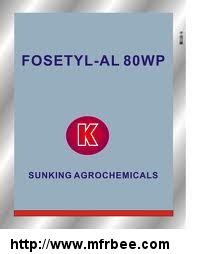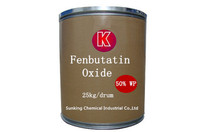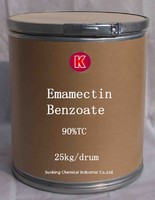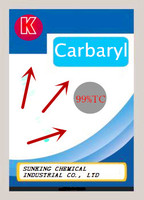Fosetyl-Al 98TC,80WP
Product Quick Detail
- Packaging
- In 25kgs craft paper bag or small package according to buyer’s requirement.
- Delivery
- N/A
Specifications
|
Properties:
Specifications for 80% MANCOZEB WP: M) Active ingredient 80.0%min Mn 20.0%min Zn 2.5%min Moisture 2.0%max PH range:5-9 Wettability 40 second max Fineness(325 mesh) 98%min Suspension% 70%min Uses: It is compatible with most commonly used agricultural fungicides, insecticides and growth regulators. Don't mix with strong alkali substance. Disease control for potatoes, sugarbeets, cereals, vegetables, fruits etc. Ecological Effects: Effects on birds: Mancozeb is slightly toxic to birds, with reported -day dietary LC50 values in bobwhite quail and mallard ducklings of greater than 10,000 ppm. The 10-day dietary LC50 values of 6400 ppm and 3200 ppm are reported for mallard ducks and Japanese quail, respectively . Effects on aquatic organisms: Mancozeb is moderately to highly toxic to fish and aquatic organisms. Reported 48-hour LC50 are 9 mg/L in goldfish, 2.2 mg/L in rainbow trout, 5.2 mg/L in catfish, and 4.0 mg/L in carp . The reported 72-hour LC50 for mancozeb in crayfish is greater than 40 mg/L; the 48-hour LC50 is 3.5 mg/L in tadpoles . Effects on other organisms: Mancozeb is not toxic to honeybees . Environmental Fate: Breakdown in soil and groundwater: Mancozeb is of low soil persistence, with a reported field half-life of 1 to 7 days . Mancozeb rapidly and spontaneously degrades to ETU in the presence of water and oxygen . ETU may persist for longer, on the order of 5 to 10 weeks . Because mancozeb is practically insoluble in water, it is unlikely to infiltrate groundwater. Studies do indicate that ETU, a metabolite of mancozeb, has the potential to be mobile in soils. However, ETU has been detected (at 0.016 mg/L) in only 1 out of 1295 drinking water wells tested . Breakdown in water: Mancozeb degrades in water with a half-life of 1 to 2 days in slightly acidic to slightly alkaline conditions . Breakdown in vegetation: When used as directed, mancozeb is not poisonous to plants . |
- Country: China (Mainland)
- Business Type:
- Market:
- Founded Year:
- Address:Mingshu Rd, Jiangshan Ind Zone, Yinzhou, Ningbo , China
- Contact:Teng Xia











